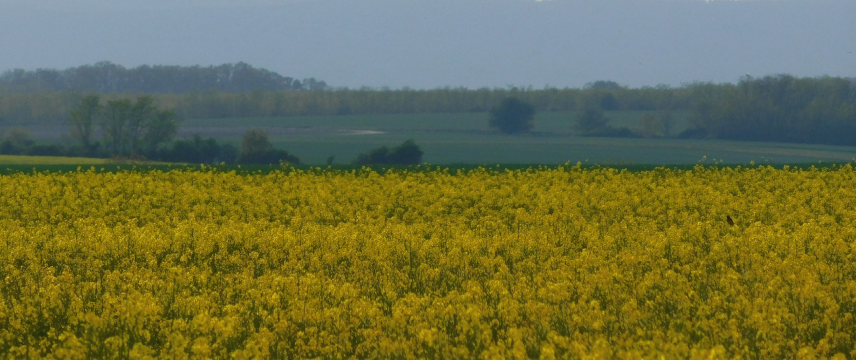Agricultural land in Hungary

Hungarian organic agriculture
In the arable fields cultivation was mainly devoted to cereals (39 % of the organic fields, 4 % grain legumes on, 19 % industrial crops such as sunflower, and soy, 4% vegetables and 2 % of the land was fallow. At the same time, 29390 hectares (32 %), was covered with green harvested plants, which means mainly soil building leguminous crops or temporary grass, or grass-legume mixtures.
The number of organic animals was less 0,1 AU/ha, although the average number of animals on organic farms is higher, then on the conventional farms. The majority of the farms (more then 2/3) have organic and conventional farm units too, including plant production and animal husbandry.
Although the ratio of the soil building crops (32 % of the organic arable area) seems to be ideal, this ratio is not a normal practice on the majority of the farms. Many newly-converted farms entered the organic market with leguminous crops, or grass-legume mixture, and many cash-crop producing farms do not rotate their crops with enough legumes.
Further, the vast majority of the farms do not have access to farmyard manure. In addition, where dried manure is used, it is quite often dried poultry manure, which comes from local conventional producers from or imported from Italy or the Netherlands.
There is no data available on the nutrient management of the organic farms.
Challenges for this land type
The challenges for this type of land are numerous and include the following:
- Not enough organic animal production leading to a lack of organic manure
- Growing competition for N sources between organic and conventional sector due to the high price of N-fertilisers
- Productivity and yield ranks higher as a priority than maintaining soil fertility
- Private European organic standards set out clear requirements in terms of the ratio of soil of soil-building crops, while the EU organic regulation which does not provide any sanctions in does not oblige the farmers to have enough soil building crops
- Problems of no-till technology (using herbicides in conventional systems, there are some pioneers among organic farmers)
- The market is overloaded with products. The new regulation on EC fertilisers opened the market for unknown products with serious doubts regarding the contaminants (heavy metals and antibiotic-residues in organic fertilisers).
Other hazards
Other hazards include:
- Complicated EU legislation, including organic regulation
- Evaluation of inputs for organic agriculture is complicated
- Climate change and growing drought
- Energy crisis and the war between Russia and Ukraine which is affecting the price of food.
Who and what is affected
The challenges outlined above and risks are affecting:
- Organic and conventional farmers
- Input-companies
- Advisory system.
Some possible solutions
Some possible solutions to this could be:
- Building strong cooperation between stakeholders, (authority, control bodies, farmer association
- Awareness raising
- Training, education
- Building short supply chains
- Increasing interest of farmers regarding reduced till, no-till and regenerative agriculture.